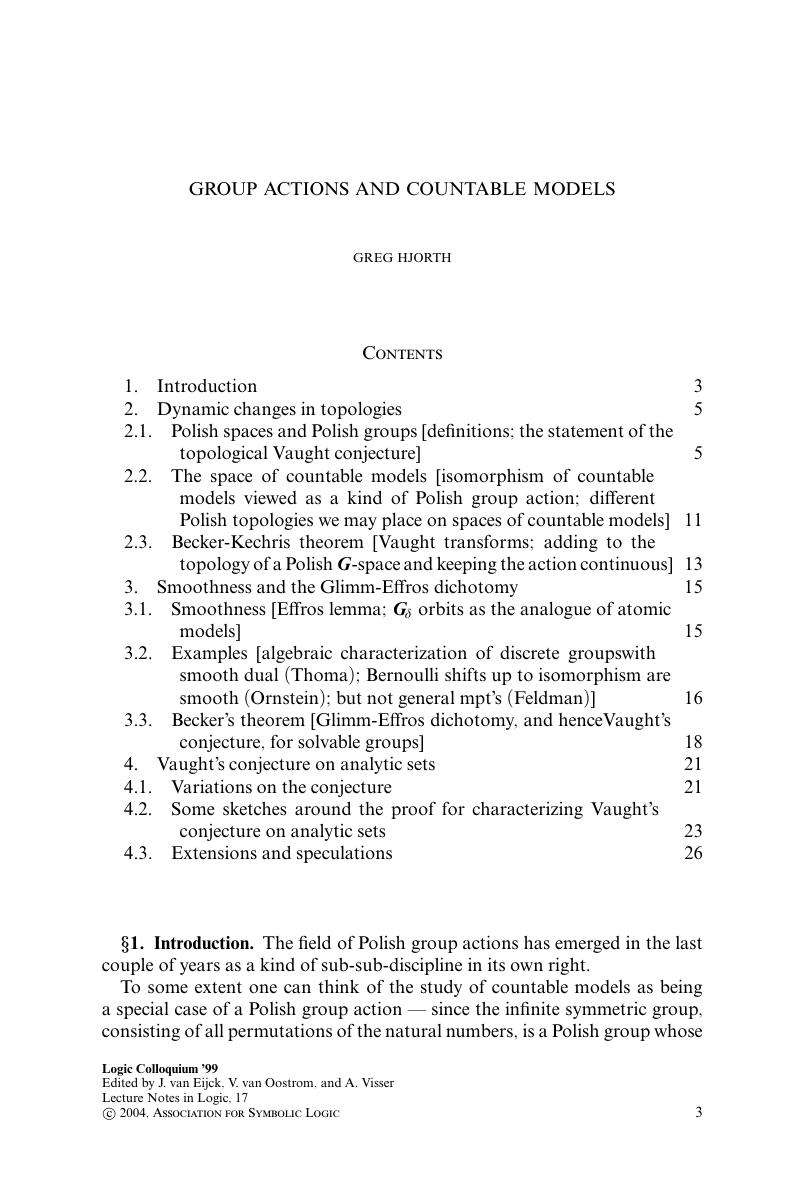Group actions and countable models
from SURVEY ARTICLES
Published online by Cambridge University Press: 30 March 2017
Summary

- Type
- Chapter
- Information
- Logic Colloquium '99 , pp. 3 - 29Publisher: Cambridge University PressPrint publication year: 2004

